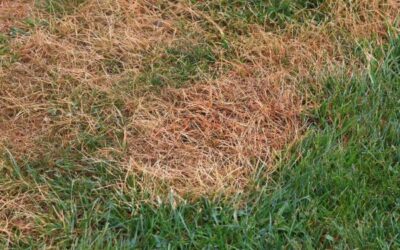A crisp evening in Central Virginia can turn into a frost by daybreak, and the difference between a thriving garden and a patch of blackened leaves often comes down to preparation. Frost is a natural part of our fall and winter rhythm, but with a plan, you can protect tender plants, help hardy ones transition, and keep your landscape looking good all season. Here is a practical guide for Charlottesville and surrounding areas on what frost is, what it does, and how to get your yard ready before the cold hits.
What frost really does to plants
Frost forms when leaf surfaces cool below the air’s dew point and water vapor freezes on contact. Inside plant cells, cold can cause ice crystals to form, puncturing cell walls and stopping normal function. Tender annuals show damage first, followed by warm-season vegetables and some broadleaf evergreens. Cool-season vegetables and most established perennials handle light frost better, especially if they are well hydrated and mulched. Understanding where your plants fall on the tender-to-hardy spectrum will help you decide what to cover, move, or simply let go when temperatures dip.
Know your yard’s microclimates
Not every part of a property cools at the same rate. Low spots collect heavier cold air and frost earlier. South-facing beds near stone or brick hold warmth longer. Areas shielded from the wind can resist frost, while open lawns radiate heat quickly at night. Take a slow walk at sunset and notice where the air feels coolest, where you see mist or dew forming first, and where hard surfaces store warmth. These observations will guide where to focus your frost protection efforts.
Watch more than the low temperature
A forecast of 36°F does not always mean safety. Cloud cover, wind, and humidity change how frost forms. Clear, calm nights favor radiational cooling and earlier frost. A damp soil surface holds heat longer than a dry one. When local forecasts mention “areas of frost,” assume your open lawn and low beds will be first to feel it. Set simple reminders on your phone for nights that look clear and still so you can run your checklist.
Prioritize what to protect
Use this quick hierarchy when time is tight.
- Newly planted trees and shrubs in their first fall
- Tender perennials, tropical accents, and flowering annuals you want to keep a little longer
- Warm-season vegetables you are still harvesting, such as peppers, tomatoes, eggplant, basil
- Container gardens and hanging baskets that chill faster than in-ground plantings
- Broadleaf evergreens in exposed sites during the first hard frost events of the season
Hardy perennials that have finished for the year can be left alone. Some foliage will slump after frost, but roots remain viable for spring.
Stock your frost kit now
You do not need specialty gear for every situation, but a small kit keeps you ready.
- Frost cloth or row cover fabric for beds and low shrubs
- Old sheets or lightweight blankets for larger annual displays
- Clothespins, landscape pins, or bricks to secure edges
- A few tomato cages or hoops to keep fabric off foliage
- Mulch for last-minute soil insulation around shallow-rooted plants
- Breathable burlap for evergreens in windy exposures
- A hose and watering wand for pre-frost soil moisture
Avoid plastic directly on leaves. If you use a tarp in a pinch, drape it over a frame so it does not touch plants and remove it as the sun hits.
The evening-before checklist
- Water earlier in the day if the soil is dry. Slightly moist soil holds heat better than dry ground.
- Harvest tender vegetables you cannot easily cover. Pick any nearly ripe fruit to avoid losing it.
- Move small containers to a protected spot near the house or into a garage. Group larger containers close to a wall that radiates warmth.
- Cover sensitive beds before dark. Secure cloth to the ground so warm air is trapped. Leave some slack so fabric does not press on leaves.
- Set a simple path for morning removal. Lay out a bin or tote for folded covers so storage is quick when you uncover plants.
Morning-after routine
- Uncover plants once the sun is up and temperatures rise. Trapped warmth can quickly become heat under clear cloth.
- Do not rush to prune frost-nipped foliage. Give plants 2 to 3 days to show the full extent of damage. Remove only mushy, diseased, or slimy material right away to prevent rot.
- Water stressed plants at midday if the soil is dry. Hydration helps them repair tissues.
- Re-cover that evening if a second frost is forecast.
Special notes for lawns, perennials, and shrubs
- Lawns: Avoid walking on frosted grass. Frozen blades crack underfoot and show footprints for weeks. Delay mowing until the frost melts and the grass dries.
- Perennials: After several frosts, cut back collapsed stems to a few inches and refresh mulch. For pollinator value, consider leaving some seedheads and hollow stems through winter, then tidy in late winter.
- Broadleaf evergreens: Hollies, camellias, laurels, and boxwood handle frost but can suffer from winter wind. A light late-fall pruning to remove weak tips and a 2 to 3 inch mulch layer help. In the windiest corners, burlap windbreaks on stakes are useful.
- Young trees: Remove competing weeds, water deeply during dry spells, and maintain a clear mulch ring. Wrap the trunk of smooth-barked species like young maples if sunscald is a concern.
Vegetable gardens and small fruits
- Cold frames extend greens and herbs well into winter. Even a simple flap of row cover over wire hoops keeps frost off lettuce and cilantro.
- For peppers and tomatoes you hope to carry a bit longer, use cages as frames and drape frost cloth to the ground. The extra week or two of harvest can be worth the effort.
- Strawberries appreciate a light mulch once the top few inches of soil have chilled. Remove the mulch gently in early spring as they resume growth.
Container strategy
Containers lose heat quickly because roots are above ground. For valuable pots you want to overwinter outdoors, consider double-potting. Slip the decorative pot into a slightly larger nursery pot insulated with leaves or straw between the layers. Set containers on pot feet or bricks so they drain freely. Group them against a south or east wall and cover on clear, cold nights.
Mulch is quiet insurance
A consistent 2 to 3 inch mulch layer around beds and shrubs moderates soil temperature, protects shallow roots, and limits winter heaving after freeze-thaw cycles. Keep mulch a few inches back from plant crowns and trunks. If a sudden early frost arrives before you can spread a fresh layer, even a temporary cover of shredded leaves around tender perennials helps.
Plan ahead for fewer frost worries next year
- Choose siting with cold in mind. Keep tender plants out of low pockets and away from wind tunnels.
- Mix in more cold-tolerant structure. Ornamental grasses, conifers, and winter-interest shrubs keep the garden attractive after frosts take the annual color.
- Add simple infrastructure. Permanent rebar sleeves in beds let you pop in hoops and row cover quickly when a cold snap appears in the forecast.
- Stagger plantings. If annual color is important for late fall events, schedule a second wave of cool-season containers in October so you can swap out summer annuals right before frost season.
A Central Virginia rhythm to remember
Our first light frosts usually arrive in mid to late fall, with harder freezes following as winter settles in. Microclimates can shift that window by several weeks. Gardens with reflected heat from walls, mature trees, and steady moisture often keep going long after open lawns have frosted. If you treat frost as a signal rather than a surprise, you can keep the color, flavor, and structure you value for weeks longer.
Quick reference: what to cover, move, or leave
- Cover: basil, peppers, tomatoes, coleus, impatiens, dahlia, canna, newly planted shrubs and perennials
- Move: small containers, hanging baskets, tropical accents like mandevilla and hibiscus
- Leave: mature hardy perennials, ornamental grasses, pansy and viola, kale, chard, carrots, beets, garlic
A short word on irrigation and hardware
Before deeper freezes, disconnect hoses from spigots, drain them, and store nozzles. If you have an in-ground system, schedule winterization after your last mowing. For now, during the frost shoulder season, keep an eye on soil moisture. A well watered landscape rides through early frosts with less stress than a dry one.
Ready for the first cold snap
Frost protection is about small, timely actions that compound into a healthier, better looking landscape. Walk the yard, gather a modest kit, and build a routine that fits your property. With a calm evening checklist and a quick morning reset, you will hold onto color and structure longer, protect new plantings while they establish, and set the stage for a strong spring.
Need a hand before the cold hits
If you would like help prioritizing which beds to protect, installing fresh mulch, setting up row cover systems, or winterizing irrigation, the team at Jack’s Lawn Care & Landscaping can prepare your property for a smooth transition into cold weather. From frost cloth installation and container moves to fall cleanups, shrub care, and lawn protection, we create simple plans that match Central Virginia conditions and your goals. Reach out to Jack’s Lawn Care & Landscaping to schedule a pre-frost visit so your landscape stays healthy and good looking from the first chilly morning through winter.



